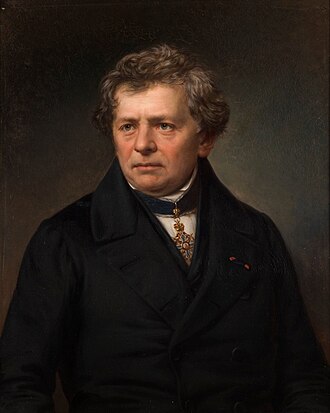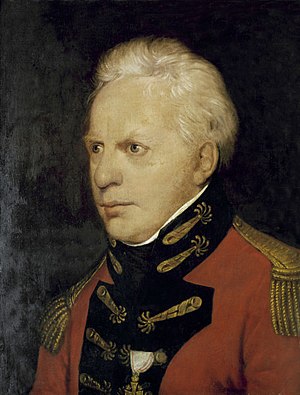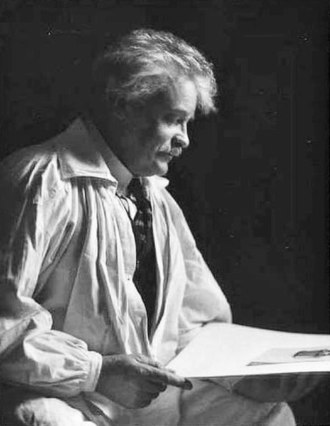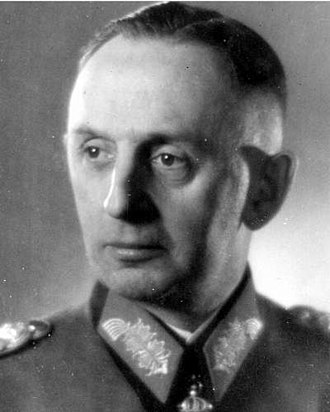Discover Your Roots
SIGN UPDiscover Your Roots
SIGN UPGeorg is a male given name of Greek origin, meaning "farmer." It derives from the Greek name Georgios, composed of the elements ge (earth) and ergon (work). The name has historical significance, being associated with notable figures like Saint George, the patron saint of England, and several kings of England. It has also been a popular choice for American presidents, including George Washington. Georg is predominantly used in Northern European countries and has been borne by various influential individuals in creative culture, science, politics, and other fields. This classic and timeless name continues to be favored by parents today for its enduring appeal and rich historical connections. Notable individuals with the name include George Frideric Handel, Georg Wilhelm Friedrich Hegel, and Prince George of Cambridge.

Georg Simon Ohm, born on March 16, 1789, was a German mathematician and physicist known for Ohm's law, which describes the relationship between voltage, current, and resistance in an electrical circuit. Raised in a family where education was highly valued, Ohm received an excellent education in mathematics, physics, chemistry, and philosophy from his father. After completing his studies, he embarked on a teaching career, holding positions in various schools and universities. Despite facing challenges and financial struggles, Ohm dedicated himself to his research and academic pursuits. In 1827, he published "The Galvanic Circuit Investigated Mathematically," a significant work that was not initially appreciated by his colleagues. However, his contributions to the field of physics were eventually recognized, and he was appointed as a professor of experimental physics at the University of Munich in 1852. Georg Simon Ohm passed away in Munich on July 6, 1854, leaving behind a legacy of groundbreaking work in the field of electrical science.

Georg Nikolaus von Nissen (1761-1826) was a Danish diplomat and music historian, renowned for authoring one of the earliest biographies of composer Wolfgang Amadeus Mozart, which remains a significant scholarly source to this day. Born in Haderslev, Denmark-Norway, Nissen had a diverse career, serving as a diplomat in the Danish foreign service and later as a censor in Copenhagen. His life became intertwined with Mozart's widow, Constanze, and they eventually married in 1809. Nissen's extensive work on the biography of Mozart began in 1823, though he passed away before its completion. Despite the posthumous publication of his biography in 1829, Nissen's efforts to gather primary sources and document Mozart's life were commendable, though some scholars have criticized his editing of certain passages. Nissen's dedication to preserving the legacy of Mozart and his contributions to music history continue to be acknowledged, with his tombstone in Salzburg bearing the inscription "The husband of Mozart's widow."

Georg Forster, also known as Johann George Adam Forster, was a prominent German geographer, naturalist, travel writer, journalist, and revolutionary. Born on November 27, 1754, in Nassenhuben (now Mokry Dwór, Poland), he was the son of Johann Reinhold Forster, a Reformed Protestant pastor and scholar. From an early age, Georg showed a keen interest in the study of nature, accompanying his father on scientific expeditions, including James Cook's second voyage to the Pacific. His report from this journey, "A Voyage Round the World," significantly contributed to the ethnology of the people of Polynesia. Forster's academic endeavors led him to teach natural history and later serve as head librarian at the University of Mainz. His work in scientific travel literature, botany, and ethnology, along with his involvement in the Enlightenment movement, influenced notable figures such as Alexander von Humboldt. Forster's revolutionary activities during the Mainz Republic and his outlaw status following the French takeover of Mainz exemplify his dedication to social and political causes. Sadly, Forster passed away in Paris in early 1794, leaving behind a legacy as a pioneer in scientific exploration and a key figure of the Enlightenment in Germany.

Georg Arthur Jensen (31 August 1866 – 2 October 1935) was a renowned Danish silversmith and the founder of Georg Jensen A/S, also known as Georg Jensen Sølvsmedie. Born in Rådvad, Denmark, Jensen began his artistic journey at the age of 14, training in goldsmithing in Copenhagen. After studying sculpture at the Royal Danish Academy of Fine Arts, he ventured into ceramics and established a pottery workshop. Facing challenges in sustaining himself and his family, Jensen transitioned to silversmithing and design, setting up his own silversmithy in Copenhagen in 1904. His unique creations, blending metalwork with fine arts, gained widespread acclaim, leading to the expansion of his retail presence in Berlin, London, and New York City. Jensen's designs, characterized by abstract organic shapes and gemstone embellishments, reflected his distinct style rooted in the Art Nouveau movement. His work is revered and has been featured in museum collections and exhibitions globally. Jensen's legacy lives on through the enduring success of the Georg Jensen brand and his innovative approach to silversmithing and design.

Georg Thomas (20 February 1890 – 29 December 1946) was a German general known for his significant role in the economic exploitation of the Soviet Union during World War II. He was involved in planning the Hunger Plan and held key positions in various military and economic offices, including the Army Weapons Office and the Defence Economy and Armament Office. Thomas was recognized for his insight into Germany's limited ability to sustain a prolonged war and his pragmatic approach to logistical concerns, which sometimes conflicted with Hitler's aggressive military strategies.Despite his involvement in the Nazi regime, Thomas's actions and interactions with other high-ranking officials have led historians to debate his role in the German resistance. Some view him as a member of the resistance due to his association with individuals like Ludwig Beck, who opposed Hitler, while others see his record as more ambiguous.Thomas's pragmatic nature and attempts to bring the German General Staff and Hitler back to reality may have contributed to his disillusionment with the regime, potentially leading him to believe that a coup was necessary to prevent Germany's destruction. His complex involvement in the Nazi era and his interactions with key figures make him a subject of historical interest and debate.
All images displayed on this page are sourced from Wikipedia or Wikimedia Commons.We use these images under their respective Creative Commons or public domain licenses. Wherever applicable, author attributions and license information are provided. If you believe an image is used incorrectly or outside its license terms, please contact us so that we can review and correct the issue.